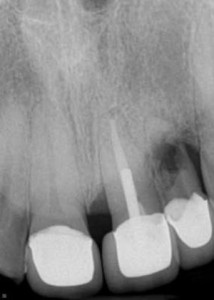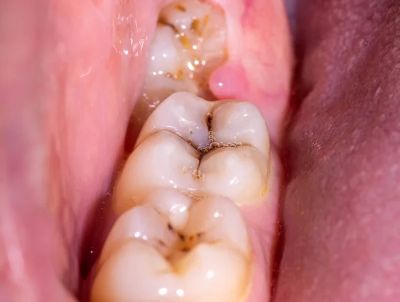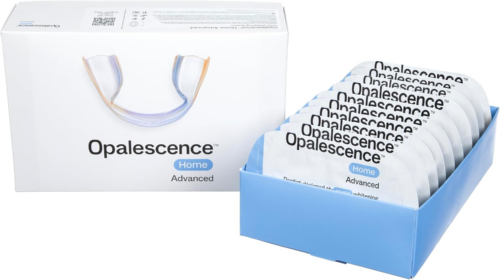The words "root canal" can send shivers down many people's spines. Often associated with pain and fear, root canal therapy has a bit of a bad rap. But what if we told you that root canals are actually tooth-saving procedures designed to relieve pain and help you keep your natural smile for years to come? Let's demystify root canals and shed some light on this incredibly common and effective dental treatment. What Exactly Is a Root Canal? At the center of your tooth, beneath the hard enamel and dentin, lies a soft tissue called the pulp. The pulp contains nerves, blood vessels, and connective tissue, and it helps your tooth grow and develop. When the pulp becomes infected or inflamed due to deep decay, repeated dental procedures, a crack or chip in the tooth, or even trauma, it can cause significant pain and lead to an abscess if left untreated. A root canal, also known as endodontic treatment, is a procedure where your dentist or an endodontist (a dental specialist who … [Read more...]
The Sweet and Sour Truth About Dental Caries (aka Cavities!)
Ever felt that little twinge of sensitivity when you bite into something cold? Or maybe you've noticed a slightly rough spot on one of your teeth? Chances are, you've encountered the not-so-sweet reality of dental caries – more commonly known as cavities or tooth decay. Don't feel alone! Dental caries is one of the most prevalent chronic diseases worldwide. But while it's common, understanding what it is and how it develops is the first step towards keeping your smile healthy and happy. So, what exactly are dental caries? Think of your teeth as tiny fortresses, protected by a hard outer layer called enamel. Dental caries is essentially the breakdown of this enamel and the underlying dentin (a softer tissue beneath the enamel). This breakdown is a gradual process, fueled by a seemingly innocent culprit: plaque. The Plaque Attack: How Caries Develop Our mouths are teeming with bacteria – some good, some not so much. When we eat or drink sugary or starchy foods, these … [Read more...]
Brighten Your Smile with Opalescence Home Advanced Whitening: A Professional-Grade Solution for At-Home Convenience
Are you dreaming of a dazzling, confident smile without the hassle of frequent dental visits? Look no further than Opalescence Home Advanced Whitening, a professional-grade teeth whitening system designed to deliver stunning results from the comfort of your home. Backed by over 30 years of dental expertise from Ultradent Products, this innovative product combines simplicity, sustainability, and effectiveness to help you achieve a smile up to 4–5 shades brighter. Let’s dive into why Opalescence Home Advanced is the ultimate choice for at-home whitening and how it can transform your smile! What is Opalescence Home Advanced Whitening? Opalescence Home Advanced Whitening is a take-home whitening system that offers professional-level results. Unlike many over-the-counter whitening products that can dehydrate teeth or cause sensitivity, this system is formulated by dentists to prioritize both efficacy and comfort. It comes in prefilled, injection-molded UltraFit™ trays that conform … [Read more...]
Café Cool by Robert Schneider
We were blessed to each receive a copy of Robert Schneider's new book Café Cool. This is his third book, following Coffee Culture: Hot Coffee + Cool Spaces (2016) and Café Culture: For Lovers of Coffee and Good Design (2019), each of which has cemented his reputation as a chronicler of coffee’s intersection with design. Robert's unique blend of analytical rigor and creative curiosity shines through in his work, and Café Cool is no exception. If you’re a lover of coffee, design, or simply the art of a well-crafted space, Robert Schneider’s Café Cool: Feel-Good Inspiring Designs is a book that deserves a spot on your coffee table—or better yet, in your hands as you sip your next espresso. Released as the third installment in Schneider’s celebrated series on coffee culture, this book takes readers on a global journey through 39 beautifully designed cafés, coffee shops, and roasteries across 26 cities. Café Cool is more than just a pretty picture book—though the full-color … [Read more...]
White Teeth by the Holidays
Does the snow falling make you think of whiter teeth? Me neither! But, I do think about how white my teeth used to be. As we age, teeth tend to get darker. The enamel that protects our teeth wears down over time. Brushing, chewing and acidic drinks all contribute to the degradation of our enamel. With less enamel, the darker dentin underneath the enamel makes our teeth appear more yellow or gray. Smoking, certain medications and foods can stain our teeth, making them less white as well. You can make your teeth whiter with very little effort. The fastest way to whiten your teeth is Zoom! Whitening. Zoom! Whitening is done in-office under a special LED halide light, your teeth become noticeably whiter in 1 visit. A less expensive option to teeth whitening is custom whitening trays with professional strength whitening gel. Custom trays are made in-office and can be ready for you to take home by the end of your appointment. You will see a difference after using your … [Read more...]
How to Prevent a Dry Socket
Dry sockets can occur after a tooth is extracted. It is a painful condition that can develop when a blood clot fails to form or dislodges before the wound heals. A blood clot serves as a barrier to protect the bone and nerve after a tooth is extracted. Dry sockets generally occur 1-3 days after the tooth is extracted and is more common with wisdom teeth removal. Although they aren't very common, occurring 2-5% of the time, dry socks are very painful. Dry sockets cause the socket to become painful and swollen, trapped food will make it feel worse. The pain spreads through the nerves into the side of the face as well. To prevent dry sockets avoid straws. The suction can dislodge the blood clot from your socket. Don't smoke! Smoking increases the risk of complications and slows healing. Eat soft foods. Eating soft foods the first day helps protect the blood clot, hard foods can dislodge the clot. Rinse with salt water. 24 hours after the extraction it is important to … [Read more...]
Please Welcome our Newest Hygienist, Kate!
Kate is our newest hygienist. She is a recent graduate of the University of Minnesota. Kate is originally from Milwaukee, Wisconsin, but has made her home in St. Louis Park. Kate has one sister, who also works in healthcare-clearly the kind and caring gene runs in the family! Kate loves spending time outdoors when the weather is nice. She enjoys picnics, walks, boating, and gardening. In the winter, Kate likes to curl up with a good book and a warm cup of tea. Kate is looking forward to meeting and building connections with the patients of Bomstad Dental. We are so excited to have Kate and her effervescent personality join our practice! … [Read more...]
Wisdom Teeth
I find wisdom teeth fascinating. They are a third set of molars we don't need anymore, some people have four while others have none. Why is there such a discrepancy from person to person? Our ancestors needed a third set of molars to aid in chewing, as their diets consisted of tough foods. For example; roots, nuts, leaves, uncooked meat, etc. According to Crest, 85% of people with wisdom teeth will need their wisdom teeth removed in their lifetime. Wisdom teeth are generally removed because there isn't room in modern day mouths to fit all 32 teeth. Other reasons wisdom teeth are removed; they tend to come in crooked and are hard to clean causing decay. But not everybody has wisdom teeth, as we evolve it is becoming more common to be missing at least one wisdom tooth. Approximately 1/3 of the population isn't born with a complete set of wisdom teeth. Certain demographics have an increased chance of not having all four wisdom teeth. 41% of Koreans, 38.4% of Bangladeshis, and … [Read more...]
Oral Cancer: What you Need to Know
Oral cancer accounts for about 3% off all cancers diagnosed in the U.S. every year, it is largely preventable. An oral cancer screening is performed at each of your hygiene visits. A thorough examination of your tissues, especially those most likely to develop oral cancer will be looked at. These tissues include: lips, cheeks, jaw, roof of the mouth, side and bottom of the tongue, and throat. Many types of Human Papilloma Virus (HPV) can lead to cancer of the oral cavity and oropharynx (throat). There are vaccines available to prevent HPV. Other risk factors for oral cancer include tobacco and alcohol use. Signs and Symptoms of Oral Cancer: If you are experiencing any of these symptoms, make sure to address the issue with Dr. Bomstad during your exam. … [Read more...]
Marijuana and Oral Health
Dr. Bomstad has been noticing a correlation between oral health and marijuana use. He has been seeing an increase in gum infections with no obvious aetiology in patients who normally have healthy mouths. These infections have been the topic of conversation at recent continuing education classes. It is not just Dr. Bomstad who is noticing, but the dental community at large. At this juncture, it is unclear if the smoke or canabis is responsible for the gingival enlargement, but it is believed to be the canabis. As more states legalize the use of marijuana, more research needs to be done on the effects it has on oral health. We do know smoking any substance can cause periodontal disease, so smoking marijuana is no different, but those who smoke marijuana seem to have more oral health problems than those who smoke tobacco. Another problem Dr. Bomstad is starting to encounter; patients think canabis use before their appointment will be helpful. The opposite is true. Canabis … [Read more...]
- 1
- 2
- 3
- …
- 5
- Next Page »







